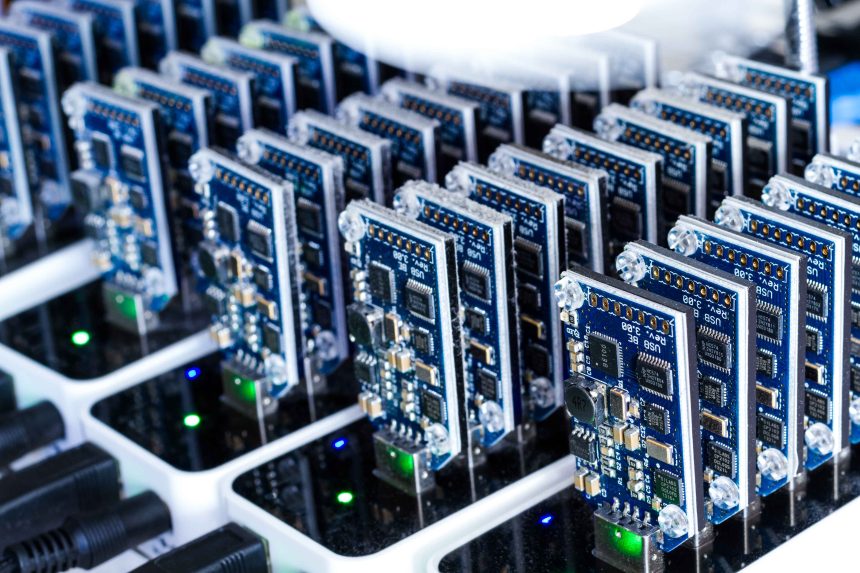Good day! Have you had some idea that by 2024, Distributed Machine Learning is supposed to control more than 60% of big business work processes? That’s right, you heard that right! In any case, what precisely is Distributed Machine Learning at any rate? Indeed, consider it the superhuman form of conventional machine learning. Rather than depending on a solitary stalwart PC to crunch every one of the information and train models, distributed machine learning spreads the responsibility across various machines, making everything quicker, more proficient, and ready to deal with gigantic measures of information effortlessly.
It resembles having a group of specialists cooperating to take care of an issue rather than one solitary officer doing all the truly difficult work. Thus, in the event that you’re prepared to open the maximum capacity of Distributed Machine Learning, stay close by on the grounds that we’re going to plunge profound into a few genuinely cool procedures for scalability and efficiency. How about we roll?
Understanding Distributed Machine Learning
Let’s separate Distributed Machine Learning in straightforward terms. Picture this: you have this very smart computer brain, correct? Presently, rather than doing all the weighty reasoning alone, it hits up its mates for help. That is distributed machine learning for you!
Anyway, what separates it from the old-fashioned approach to getting things done? Customary machine learning resembles a performance act, where one computer handles everything from data crunching to model training. However, Distributed Machine Learning resembles setting up a party where each computer chip gets in on the activity, making the entire cycleway quicker and more proficient.
Presently, we should discuss advantages and difficulties. On the brilliant side, Distributed Machine Learning can handle ginormous measures of data gracefully, and it’s lightning-quick because of cooperation. In any case, it’s not all rainbows and unicorns. Organizing that large number of computers can be precarious, and some of the time correspondence gets a piece tangled.
Basically, Distributed Machine Learning resembles cooperation on steroids, making large data issues seem to be no problem. In any case, similar to any superhuman crew, it has its arrangement of difficulties to handle. Thus, lock in because we’re simply starting to expose this fascinating world!
Strategies for Scalability
With regards to Distributed Machine Learning, scalability resembles the mystery ingredient that makes everything work without a hitch. Anyway, what are some executioner procedures to increase your distributed ML game? How about we separate it?
Data Partitioning
First up, we have data partitioning methods. Picture this: you have this huge dataset, and you really want to separate it across numerous hubs. That is where data partitioning plunges in like a hero. Everything revolves around separating the data into reduced pieces and conveying them across the group of machines. Every hub gets its piece of the riddle to deal with, accelerating the interaction and keeping things moving along as expected. It resembles having a lot of culinary experts cooperating to cook a gigantic gala – partition and overcome, child!
Parallel Processing
Presently, we should discuss parallel processing. Envision, you have a lot of errands to handle, and you need to finish them in record time. That is where parallel processing becomes the most important factor. Rather than handling each errand individually, you can separate them and work on them all the while. It resembles having a lot of clones (in a non-sci-fi way, obviously) to take care of you. Each clone takes on an errand, and in a flash, everything’s finished much more efficiently. With Distributed Machine Learning, parallel processing is the situation for speeding up model training and obtaining results quicker than at any other time.
Model versus Data Parallelism
To wrap things up, we should discuss model parallelism versus data parallelism. It resembles picking your own experience in the realm of Distributed Machine Learning. Model parallelism is tied in with separating the actual model across different hubs, while data parallelism centers around partitioning the data. Each approach has its advantages, and knowing when to utilize it can have a significant effect on your distributed ML venture. All in all, which way will you pick?
Strategies for Efficiency
With regards to Distributed Machine Learning, making the most out of your resources is critical to keeping things moving along as expected. We’re jumping into some executioner procedures that will have your distributed framework murmuring along like clockwork.
Resource Optimization
First up, we have resource optimization. Picture this: Your distributed machine-learning arrangement resembles a clamoring kitchen. You have different cooks (or hubs) cooperating to prepare something delicious (your model). To guarantee everybody’s working at max limit, you want to deal with your fixings (computational resources) astutely. From computer processor cycles to memory use, each resource counts. We’ll dole out a few first-class ways to extract every single drop of execution from your equipment.
Communication Optimization
Next on the menu, we’re handling communication optimization. Very much like in any group, great communication is critical. In any case, in a distributed climate, an excess of prattle can pump the brakes. We’ll tell you the best way to cut back the excess and keep those between hub discussions lean and mean. Whether it’s limiting organization inactivity or smoothing out message passing, we have the hacks to keep your distributed hubs talking without getting impeded.
Algorithmic Efficiency
To wrap things up, let’s talk about algorithmic efficiency. This is where the genuine magic occurs. We’ll dive into the bare essentials of algorithms custom-fitted explicitly for distributed conditions. From sharp partitioning strategies to parallel processing magic, we’ll investigate how to fight your data and algorithms for the greatest speed and efficiency. Prepare to step up your Distributed Machine Learning game with these stalwart strategies.
So that’s it, parents. With these executioner methodologies for resource, communication, and algorithmic efficiency, you’ll be well en route to excelling at Distributed Machine Learning.

Leave a Reply